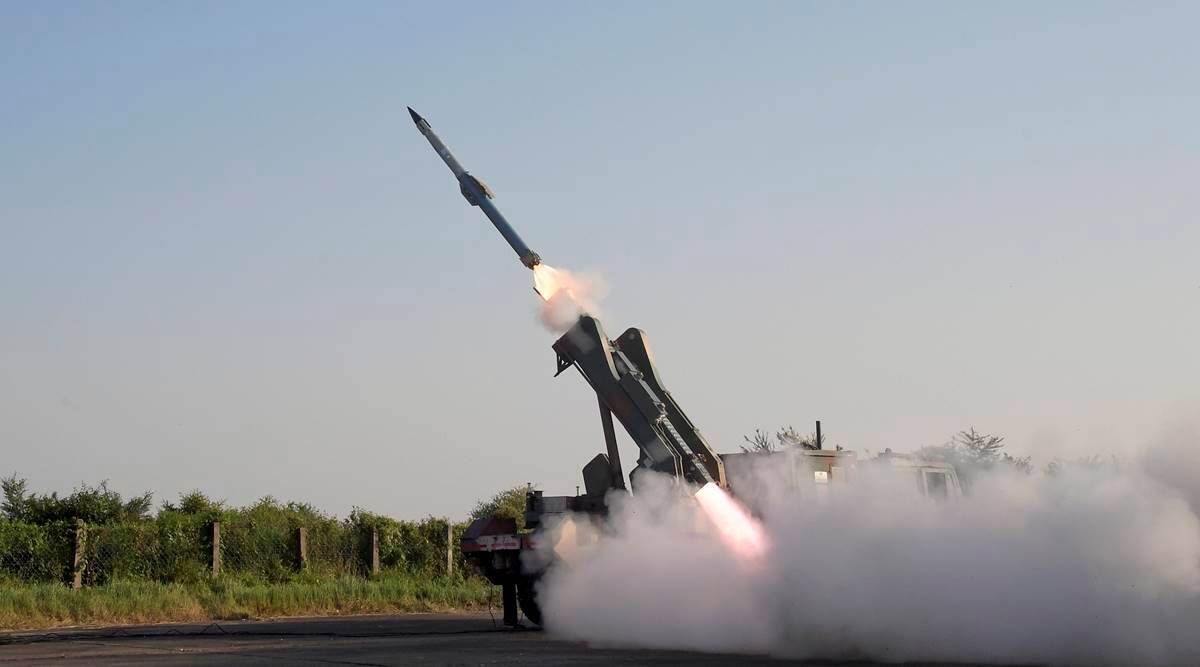Quick Reaction Surface to Air Missile system | 09 Sep 2022
Why in News?
Recently, India conducted six successful flight-tests of the Quick Reaction Surface to Air Missile (QRSAM) system from Integrated Test Range (ITR) Chandipur off the Odisha coast.
- The test was jointly conducted by the Defence Research and Development Organisation (DRDO) and Indian Army.
What is QRSAM?
- About:
- QRSAM is a canister-based system, which means that it is stored and operated from specially designed compartments.
- In the canister, the inside environment is controlled, thus along with making its transport and storage easier, the shelf life of weapons also improves significantly.
- The system is capable of detecting and tracking targets on the move and engaging targets with short halts.
- QRSAM is a canister-based system, which means that it is stored and operated from specially designed compartments.
- Range and mobility:
- It is a short-range surface-to-air missile (SAM) system, primarily designed and developed by DRDO to provide a protective shield to moving armoured columns of the Army from enemy aerial attacks.
- The entire weapon system has been configured on a mobile and manoeuvrable platform and is capable of providing air defence on the move.
- It has been designed for induction into the Army and has a range of 25 to 30 km.
- Functioning:
- The QRSAM weapon ensemble, which functions on the move, consists of a fully automated command and control system.
- It also consists of two radars - Active Array Battery Surveillance Radar and Active Array Battery Multifunction Radar - with one launcher.
- Both radars have 360-degree coverage with “search on move” and “track on move” capabilities.
- The system is compact, uses a single stage solid propelled missile and has a mid-course inertial navigation system with two-way data link and terminal active seeker developed indigenously by DRDO.
- The QRSAM weapon ensemble, which functions on the move, consists of a fully automated command and control system.
UPSC Civil Services Examination Previous Year Question (PYQ)
Q. What is “Terminal High Altitude Area Defense (THAAD)”, sometimes seen in the news? (2018)
(a) An Israeli radar system
(b) India’s indigenous anti-missile programme
(c) An American anti-missile system
(d) A defence collaboration between Japan and South Korea.
Ans: (c)
Exp:
- Terminal High Altitude Area Defence (THAAD) is an American anti-missile system designed to intercept and destroy short and medium-range ballistic missiles during their “terminal” phase of flight when they are falling towards the target.
- They have the ability to intercept missile inside and outside the atmosphere.
- It is interoperable with other ballistic missile defence systems and is highly mobile and deployable worldwide.
- Therefore, option (c) is the correct answer
Q. With reference to Agni-IV Missile, which of the following statements is/are correct? (2014)
- It is a surface-to-surface missile.
- It is fuelled by liquid propellant only.
- It can deliver one-tonne nuclear warheads about 7500 km away.
Select the correct answer using the code given below:
(a) 1 only
(b) 2 and 3 only
(c) 1 and 3 only
(d) 1, 2 and 3
Ans: (a)
- Agni-IV is a nuclear-capable long-range ballistic missile of India, with a strike range of 4,000 km.
- The indigenously developed Agni-IV is a two-stage surface-to-surface missile. It is 20 metres long with a weight of 17 tonnes. Hence, statement 1 is correct.
- It is a two stage solid fuelled system that can carry a one-tonne nuclear warhead over a distance of 4,000 kilometres. Hence, statements 2 and 3 are not correct.
- Therefore, option (a) is the correct answer.

